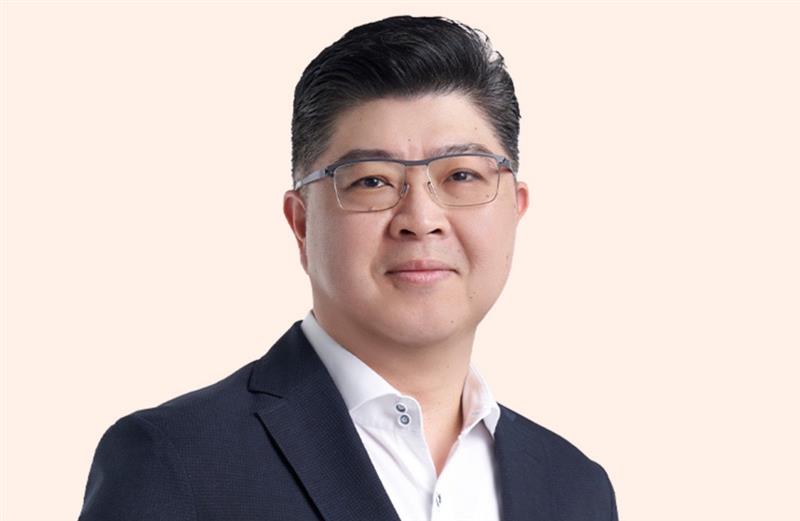Microsoft’s HR playbook: Building capability, confidence and culture in an AI-driven workplace
- Josephine Tan

As organisations across Asia-Pacific accelerate their shift towards AI-enabled work, Microsoft is emerging as one of the examples of how HR can lead—not follow—in transformation. This was the central message shared by Lesley Gong, HR Director for Microsoft Hong Kong and Taiwan, during a recent LinkedIn Live session hosted by Rita Tsui, Founder of AsiaHRM. Titled Navigating the Future: Embracing Technological Change in the Workplace, the conversation took place as part of the Asia HR Leaders Live Series, a streamed leadership dialogue supported by HRM Asia and rapidly becoming a go-to platform for practitioners seeking real-world insights into the evolving future of work.
For Gong, who has spent nearly eight years at Microsoft following roles at Amazon and Alstom, the last few years have marked the most transformative chapter of her career. “I really experienced Microsoft’s digital transformation—and now AI transformation,” she reflected. “As an HR professional here, I stand in front of the trend. We’re not only welcoming new technologies; we’re defining how HR should use them.”
What emerged from the session was a rare, detailed look into how one of the world’s largest technology organisations is operationalising AI inside the HR function—from capability building to responsible governance to organisational design—and what other HR leaders can learn from its journey.
Turning AI into HR value
Gong began by outlining Microsoft’s strategic approach: prioritising AI initiatives that provide tangible support to Microsoft’s people priorities and HR’s “big rocks.” The work, she emphasised, is grounded in measurement from the start.
Some of the impacts already observed include:
- 20% increase in case management efficiency in HR shared services with the use of Copilot-enhanced workflows.
- 22% reduction in case resolution time, improving employee experience and freeing teams for higher-value work.
- Significant uplift in talent engagement, with LinkedIn Recruiter’s AI-assisted messaging driving response rates from 49% to 66%.
- 94% of Microsoft HR professionals becoming monthly active users of Copilot, especially in Temas, meeting management, document drafting, and research.
These are not mere efficiency gains, Gong stressed, but signals of a shift in how HR operates. “The integration of Copilot and AI is revolutionising HR by enhancing efficiency and employee engagement,” she said. “It is becoming our daily assistant.”
The adoption is not limited to shared services or talent acquisition. AI-enabled features, such as D365 Copilot in Outlook, are enabling HR managers to access relevant insights quickly, strengthening real-time decision-making.
Despite AI’s technology-forward nature, Microsoft’s HR transformation is anchored in a deeply human philosophy.
“At the core, AI is about being more human,” Gong said. “So we look at everything through a human-centred lens—our culture, our change management, our leadership.”
The tech giant’s growth mindset, championed by Microsoft CEO Satya Nadella, plays a pivotal role. HR teams are encouraged to:
- experiment often,
- stay curious,
- challenge traditional workflows, and
- ask Gong’s favourite question: What if?
This question—simple but powerful—became a recurring theme throughout the session. “What if we use AI instead of the normal working way?” Gong explained. “What if AI can solve our current pain points?”
Responsible AI is another cornerstone of Microsoft’s approach. HR teams are trained not only in using AI but in understanding data governance, permissions, enterprise security, and appropriate use—critical areas for any function handling sensitive employee information.
Driving adoption at scale: SMEs, early adopters, and HR communities
One of the most structured and effective elements of Microsoft’s transformation is its three-layer adoption model:
- Subject Matter Experts (SMEs): Each HR team appoints volunteer SMEs who partner closely with engineering teams to design scenarios and test use cases.
- Early Adopters: Passionate volunteers who pilot early prototypes, lead function-specific AI communities, and build momentum through peer influence.
- Managers and HR Leaders: Leaders set expectations, recognise innovators, and drive deployment across the full HR population.
This bottom-up plus top-down model ensures what Gong described as “high-touch engagement.” Teams receive ongoing support through community channels, regular meetings, and practical prompts shared daily in Microsoft Teams groups.
Upskilling is mandatory. HR employees complete training in responsible AI, Copilot usage, and prompting techniques. Many also undergo the organisation’s AI 100 training, building foundational literacy in AI concepts.
These efforts have allowed Microsoft to move quickly—so quickly, in fact, that HR is now seen as an internal pioneer. “We rethink the pace of change,” Gong said. “This time, HR wants to be the first group to adopt AI.”
When asked what action is most critical for enabling a human-centred AI transformation—communication, community, upskilling, or measurement—Gong was unequivocal: “Communication, communication, and communication.”
But communication is not without challenges.
Employees worry about their workload, their learning curve, and most importantly, their job security. Gong acknowledged these openly.
“People ask, if AI takes over the routine work, will my job disappear?” she said. “Yes, if we don’t innovate or move our workload to AI, some roles will change. But with innovation, new meaningful jobs will appear.”
Her example was compelling: this year, Microsoft eliminated HR involvement in the annual rewards process for all employees below the general manager level. Business leaders now drive the conversations themselves, freeing HR to focus on strategic work.
“This is how AI helps people thrive,” she emphasised. “We release HR from routine tasks and move them towards impactful, strategic contributions.”
Adaptive leadership: Thriving in ambiguity
A major pillar of Microsoft’s transformation is the organisation’s adaptive leadership training, rolled out not only to HR but also to senior leadership teams across functions.
Adaptive leadership is more than just a personality trait, Gong emphasised. It is a teachable skill designed to help leaders navigate uncertainty. “No one knows the right answer in this transformation,” she said. “Leaders must explore, innovate, and bring their teams along.”
READ MORE: Why HR leaders must ‘walk the talk’ to bridge the AI tech-savviness gap
The results are visible across Microsoft Asia. Teams have begun operating in rapid experimentation cycles. Temporary squads form around a challenge or idea, work intensely for eight weeks, test new solutions, and disband if the idea fails—without stigma.
“They fail fast and move forward,” Gong explained. “This is a completely different way of working.”
The future of HR: Becoming architects of innovation
Gong’s message to HR leaders across Asia was clear: the future of HR is not about protecting traditional workflows; it is about experimenting, exploring, and leading.
“Every person knows AI is the trend. But HR must make AI a means to an end,” she said. “We must use it to create meaningful work, empower people, and drive the organisation forward.”
AsiaHRM’s Tsui concluded the session by reinforcing the power of the “what if” mindset. “We cannot stay where we are,” she said. “We need to push ourselves to show our value to the organisation.”






